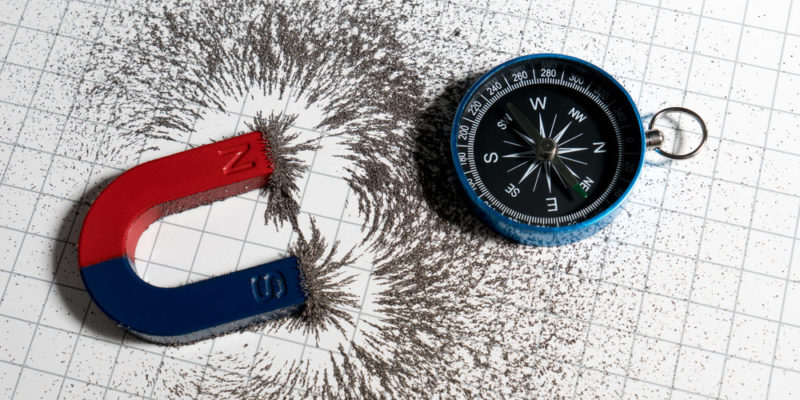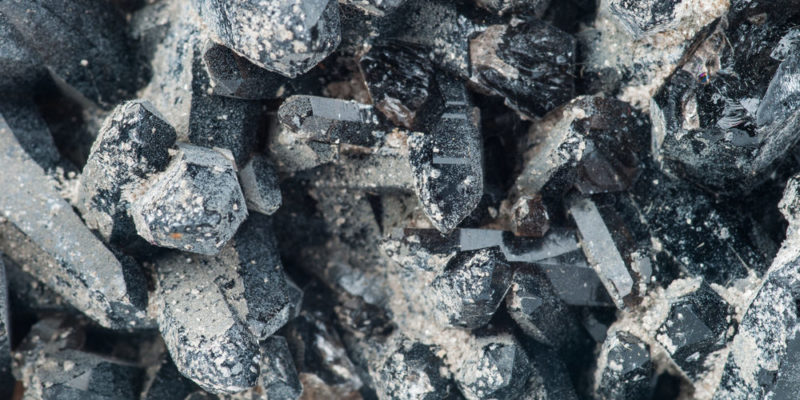We explain what a magnet is, what its characteristics are and how it works. Also, its classification, magnetic field and applications.

What is a magnet?
A magnet is known as a body of any material capable of producing a magnetic field and attract towards itself or be attracted towards another magnet or towards any other body of iron, cobalt or other ferromagnetic metals. It is a material with natural or artificial ferromagnetic properties, which generate a continuous magnetic field.
Magnets are some of the first manifestations that humans discovered of magnetism, known since classical antiquity but understood only in the 19th century when it was learned that most known elements and compounds demonstrated a certain level of magnetism.
See also: Electrostatics
Characteristics of a magnet

Magnets are bodies that generate a magnetic field around them. oriented based on two poles: negative (South) and positive (North). These poles attract their opposites (positive-negative) but repel their equals (positive-positive or negative-negative). The line that joins both poles is called the magnetic axis.
The magnetic properties of magnets remain intact unless opposite magnetic forces are applied to them, their temperature is increased (above the Curie Temperature or Curie Point, different depending on the element), or if they are subjected to shocks. strong or very tall. On the other hand, these properties can be temporarily transferred to a sensitive material by contact (magnetization).
How do magnets work?
The magnetism of magnets is product of a particular arrangement of electrons (negatively charged subatomic particles) that make up matter. These have an intrinsic rotation about their own axis, which is called spin. Moving charges generate magnetic fields. Therefore, rotating electrons, that is, moving charges, also generate a magnetic field. The introduction of energy into matter (for example the application of intense magnetism of the opposite type or heat that greatly raises the temperature) destroys magnetism, since it alters the delicate balance of electrons.
In the case of induced magnets (magnetized substances) the effect is similar: when subjected to a magnetic field through contact, their electrons are arranged in the same direction and reproduce the magnetic field for some time.
Types of magnets

There are three types of magnets, classified according to their nature as:
- Natural magnets. Generally composed of mixtures of magnetite (ferrophelite or morpholite, composed of ferric oxides) and other terrestrial minerals, they naturally have magnetic properties. The main magnetite deposits are found in Sweden (Falun, province of Dalarna), Norway (Arendal), France (Plestin-les-Gréves, Brittany) and Portugal (Sao Bartolomé, Nazaré).
- Permanent artificial magnets Materials sensitive to magnetism that, after being rubbed with magnetite, replicate their ferromagnetic properties for a long period of time until eventually losing them.
- Temporary artificial magnets. Materials sensitive to magnetism that, after being rubbed with magnetite, replicate their ferromagnetic properties, only for a very short period of time.
- Electromagnets. They are coils of wire that are wound around a magnetic core made of a ferromagnetic material such as iron. Electricity circulates through the coils, generating an electric and magnetic field around it. The iron magnetic core concentrates the magnetic flux and makes a more powerful magnet. This phenomenon lasts only as long as electricity circulates.
magnetic field of a magnet
a magnetic field is the region of space around a magnet in which its magnetic forces manifest and act, interacting (attracting or repelling) ferromagnetic objects, electric currents and other magnets that are within the field.
Usually It is represented by lines of force which are curved arrows that indicate the vector direction of the magnetic force of the field. The shape and direction of these lines will depend on the shape of the magnet, and they have their greatest intensity in the region of the poles.
Our planet Earth has a magnetic field similar to that of magnets since its iron core acts as a large mass of moving charged particles. For this reason, compass needles are aligned with the north pole. This Earth's magnetic field also defends us from solar electromagnetic emissions, known as “solar wind.”
Applications of magnets

Magnets have played various roles in our civilization since ancient times and today they are an indispensable element in electronics and electricity. Some of its best-known applications are:
- Manufacture of magnetic tapes In the electronics and computing industry, magnetism allows the storage of information through iron oxides whose particles, susceptible to ordering by the magnetic field, can be read with binary code.
- Electrical transformers Using coils and electromagnets, the electric current can be modulated to quickly change the electromagnetic fields. This principle is fundamental in modern electrical transmission and also applies to radios, speakers and other devices.
- AC motors These motors are a type of electromagnet, since rotating magnets mobilize the rotors with their magnetic fields.
- Magnetic suspension Large, powerful magnets are used in the magnetic suspension of trains and other vehicles, as well as in industrial magnetic cranes.
- Artisanal use Magnets are usually attached to various crafts or tourist souvenirs for sale, under the premise that when tourists return home they will place them on the metal surface of their refrigerator.
References
- “Magnet” on Wikipedia.
- “How do magnets work?” (video) in Curiously 45.
- “The role of magnets in industry and all its applications” in Imamagnets.
- “Magnet” at Encyclopedia.com.
- “Magnet” in The Encyclopaedia Britannica.





